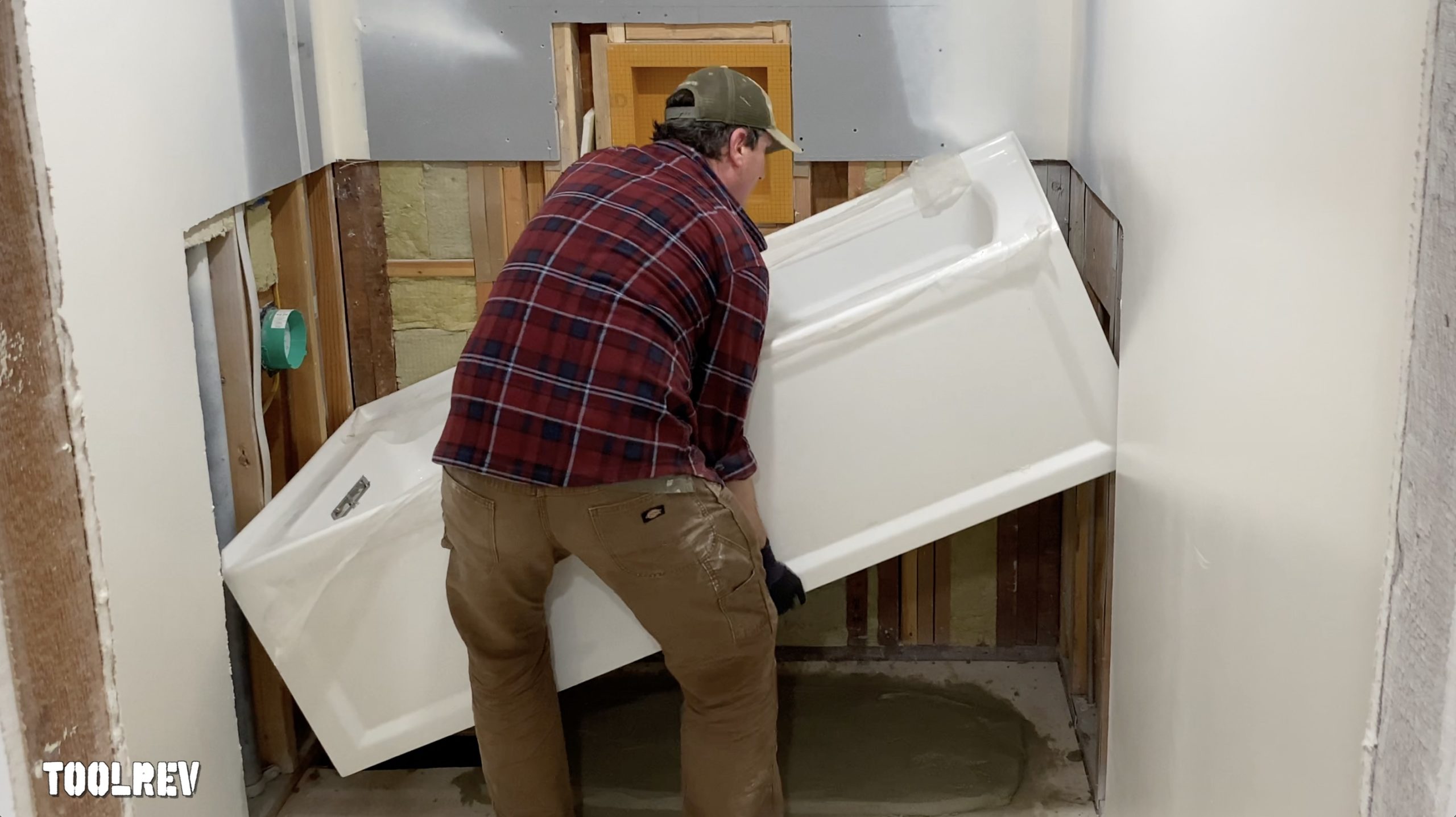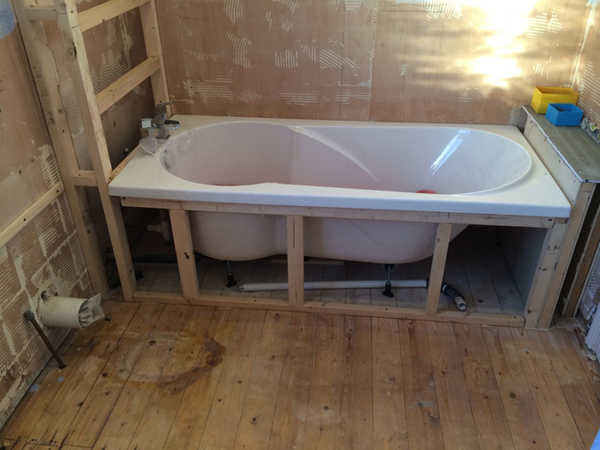Mastering Plumbing Fundamentals for Installing a Bathtub
Mastering Plumbing Fundamentals for Installing a Bathtub
Blog Article
Each person may have their personal rationale with regards to Installing A Bathtub.

Installing a bath tub isn't precisely rocket science, however it does need strong plumbing, woodworking, as well as in some cases, tiling skills. Replacing an old bath tub with a brand-new one is also a reasonably hard job. If the old tub is readily available, the task can relocate rapidly; if you have to open a wall surface to eliminate the old tub and also place the new bath tub, the job is much harder. In either situation, the task is within a home handyman's abilities, although you will need an assistant to leave the old tub and set in the new one. Make sure you have certified yourself for the work and are comfortable trying it. Rather than employing a specialist to take control of a halfway-completed job, it is far better to think about utilizing one before you begin. Chances are you may need a professional plumber to make tube connections.
This write-up will certainly aid you set up a new bath tub in your bathroom if you have actually already acquired a new bathtub as well as do not require to transform the setup of your previous water pipes.
Your devices as well as product list should make up the following:
Removing Old Taps
If you need to change old faucets with brand-new ones as a part of your setup, then the first thing you ought to do is disconnect the water. After doing so, switch on the taps to drain pipes any water continuing to be in the system. The procedure of eliminating the existing faucets can be rather problematic due to the restricted accessibility that is frequently the case.
Use a basin wrench (crowsfoot spanner) or a tap device to undo the nut that attaches the supply pipelines to the taps. Have a towel prepared for the remaining water that will come from the pipelines. Once the supply pipelines have actually been gotten rid of, utilize the very same tool to loosen up the nut that holds the faucets onto the bath/basin. You will need to quit the solitary faucets from turning throughout this procedure. When the faucets have actually been gotten rid of, the holes in the bath/basin will certainly have to be cleaned up of any old sealing substance.
Before going on to fit the new taps, compare the pipeline links on the old taps to the new faucets. If the old faucets are longer than the new taps, then a shank adapter is required for the brand-new faucets to fit.
Suitable New Taps
If the tails of the brand-new faucets are plastic, then you will certainly require a plastic connector to stop damages to the string. One end of the adapter fits on the plastic tail of the faucet and the other end provides a link to the existent supply pipes.
If you require to fit a monobloc, after that you will call for minimizing couplers, which attaches the 10mm pipe of the monobloc to the conventional 15mm supply pipeline.
Next, place the tap in the placing hole in the bath/basin ensuring that the washing machines are in area between the faucet and also the sink. Protect the tap in place with the manufacturer offered backnut. When the faucet is safely in position, the supply pipelines can be linked to the tails of the taps. The faucets can either be connected by using corrugated copper piping or with normal faucet adapters. The former kind needs to be attached to the tap finishes initially, tightening up just by hand. The supply pipes can later be connected to the other end. Tighten up both ends with a spanner after both ends have been attached.
Setting up the Tub
Utilizing the two wood boards under its feet, position the bathtub in the required placement. The wood boards are valuable in equally spreading the weight of the bath tub over the area of the boards rather than focusing all the weight onto four little factors.
The following objective is to ensure that the tub is leveled all round. This can be attained by examining the spirit level and changing the feet on the tub till the spirit level reviews degree.
To set up faucets, fit the bottom of the outermost adaptable faucet port to the suitable supply pipeline by making a compression sign up with; after that do the same for the various other tap.
Turn on the water system as well as check all joints and brand-new pipework for leakages and tighten them if needed. Load the bathtub as well as likewise check the overflow outlet and also the typical outlet for leaks.
Ultimately, take care of the bath paneling as defined in the maker's instruction manual. Tiling and also sealing around the tub must wait up until the tub has been utilized a minimum of when as this will certainly resolve it into its last position.
Planning for the Installment
To start with, the supporting framework provided with the bath must be fitted (if required) according to the producer's instructions. Next, fit the taps or mixer to the bath tub. When fitting the faucet block, it is essential to ensure that if the faucet includes a plastic washer, it is fitted in between the bath as well as the faucets. On a plastic bathroom, it is also practical to fit a sustaining plate under the taps system to prevent strain on the tub.
Fit the versatile tap ports to the bottom of both taps using 2 nuts as well as olives (occasionally supplied with the tub). Fit the plug-hole outlet by smearing mastic filler round the sink electrical outlet opening, and after that pass the electrical outlet via the hole in the bathroom. Make use of the nut provided by the manufacturer to fit the plug-hole. Examine the plug-hole outlet for an inlet on the side for the overflow pipe.
Next off, fit completion of the adaptable overflow pipeline to the overflow outlet. After that, screw the pipeline to the overflow face which need to be fitted inside the bathroom. Make certain you utilize every one of the provided washers.
Attach the trap to the bottom of the waste outlet on the tub by winding the thread of the waste electrical outlet with silicone mastic or PTFE tape, as well as screw on the trap to the electrical outlet. Attach the bottom of the overflow tube in a comparable manner.The bathroom need to currently prepare to be suited its final placement.
Tiling Around the Bath tub
In the location where the bathroom satisfies the floor tile, it is essential to seal the accompanies a silicone rubber caulking. This is important as the fitting can relocate enough to split a rigid seal, creating the water to pass through the wall surface in between the bathroom and also the tiling, resulting in issues with dampness as well as feasible leakages to the ceiling below.
You can select from a range of coloured sealants to assimilate your components as well as fittings. They are sold in tubes as well as cartridges, and also are capable of sealing spaces approximately a width of 3mm (1/8 inch). If you have a larger space to load, you can load it with spins of drenched paper or soft rope. Keep in mind to constantly load the tub with water before sealing, to permit the activity experienced when the bathtub is in usage. The sealant can fracture fairly very early if you do not consider this motion before sealing.
Additionally, ceramic coving or quadrant ceramic tiles can be made use of to border the bathroom or shower tray. Plastic strips of coving, which are easy to use and also reduce to size, are additionally easily offered on the market. It is suggested to fit the tiles utilizing waterproof or waterproof adhesive as well as cement.
Bathtub Installation
How Important Is A Bathtub To Your Home?
High-quality baths, showers, and other bathroom updates are necessary when considering a smart investment in your home. It’s a room that you go to every day and one that is constantly being used by guests.The bathroom is one of the top trafficked rooms in a home and also one of the most valuable in terms of home resale.
Install Piping Before Tub
You will be using your existing drain and waste vent system, but pipes required include the hot and cold water supply lines and a pipe leading to a shower head. A mixing valve and shower head are also needed. Air chambers may be required.
Position the Tub
Lower the tub into place so that the continuous flange fits against the wall studs and rests on 1’x4' or 2’x4' supports. Anchor the tub to the enclosure with nails or screws inserted through the flanges into the studs.
NOTE: Remember, bathtubs and shower stalls may require support framing. A bathtub filled with water is extremely heavy, so check building codes and framing support before installing the tub.
Assemble Drain Connections
Assemble the bathtub drain connections by connecting the tub overflow with the tub drain above the trap, not beyond it. The trap will have a compression fitting that screws over the arm of the overflow assembly.
Place a Pipe For the Shower Head
First, locate a brass female threaded winged fitting and attach it to a framing support via a screw or a nail. Then run a pipe up the wall for the shower head. Sweat or solder the other side of the brass fitting to the top of the pipe.
Attaching Hot and Cold Water Lines
Attach your water lines for both hot and cold by sweating these directly into the hot and cold ports of the mixing valve. The mixing valve will be how water enters the tub’s system, not by the pipes themselves.
Install the Spout
Extend a piece of 1/2 inch pipe, or whichever length is specified in the manufacturer’s instructions, for the tub spout. Sweat on a male threaded fitting at the end of the pipe or use a brass nipple of the proper length and a 1/2 inch cap.
NOTE: At this point you should have your rough-in plumbing work inspected before proceeding further.
Check For Leaks
Restore the water pressure and check the drain connection and the supply pipes for any sign of leaking.
estore the Bathroom Wall
Replace the wall with moisture-resistant drywall as a base for your wall covering. Seal the joints between the wall and your new tub with silicone caulk as protection against water seepage.
https://www.berkeys.com/2016/12/02/bathtub-installation-dallas/

As a keen person who reads on A Step-by-Step Guide to Installing a Bathtub, I imagined sharing that excerpt was beneficial. Sharing is nice. Helping people is fun. Thank-you for your time spent reading it.
Leak? Reach out! Report this page